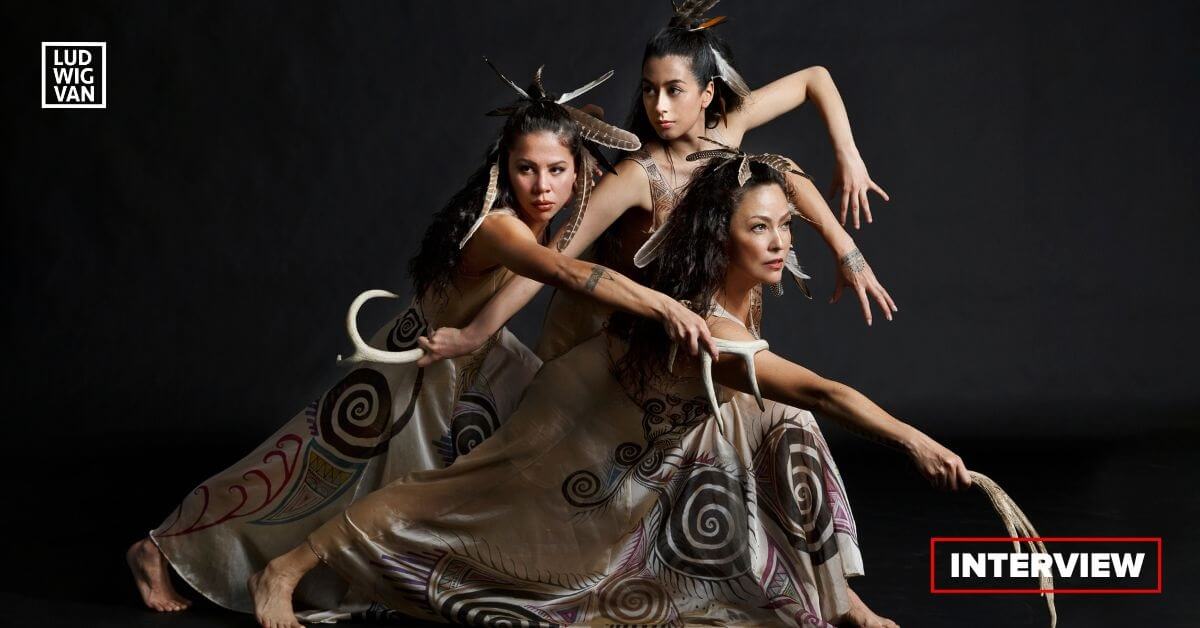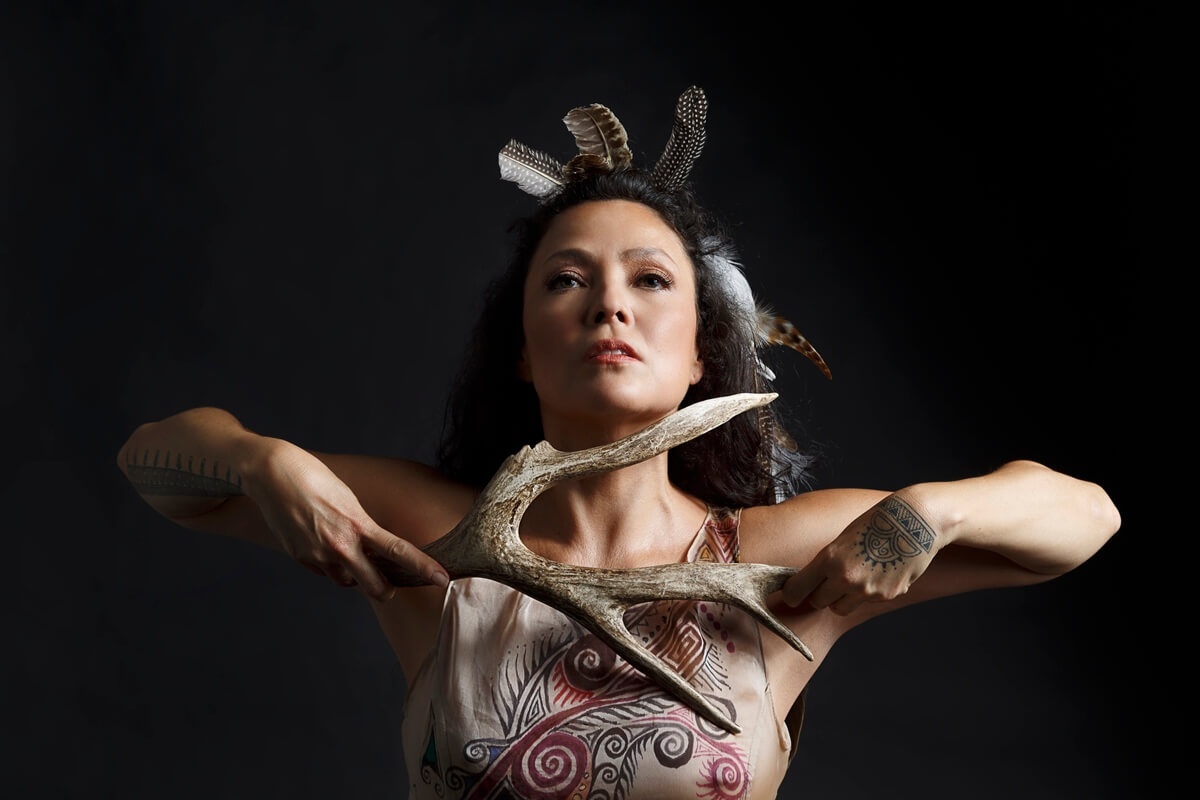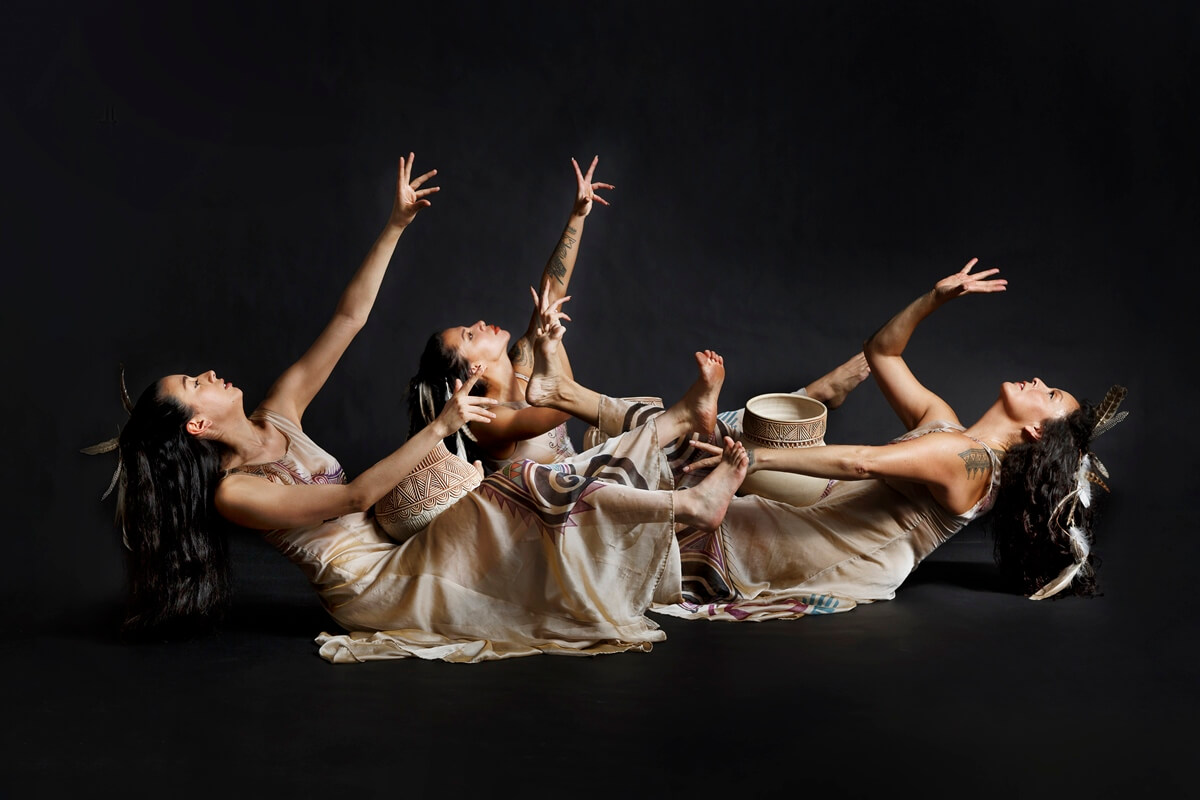
At 52, internationally-acclaimed choreographer Santee Smith is at the height of her powers. Since founding Kaha:wi Dance Theatre in 2005, she has produced an exquisite body of work anchored in Indigenous knowledge and experience.
Her latest dance piece Homelands, which runs at Harbourfront’s Fleck Dance Theatre from Apr. 13 to 15, was inspired by the ancestral home of the Mohawk in upstate New York. The work is also tied to the Six Nations of the Grand River, where Smith’s ancestors eventually made their home. The multimedia Homelands honours the Indigenous kinship to the patterns, energies and life force of the natural world. Smith describes the piece as a “dreamscape created of landscape, water, textures and women”.
We spoke by Zoom, where Smith elaborated on the making of Homelands, and her inspiration for the choreography.
To make this piece, you went right back to the ancestral lands of the Mohawk for inspiration.
My people originally lived in upstate New York around the Mohawk River near the Adirondacks. It is where my body felt its ancestral belonging amid these rolling hills.
I was there for the first time in 2013, and for me, it was a pilgrimage to my ancestral land. I felt my body reacting, shifting, to being in that landscape. The improv explorations that I did there became the genesis for the theatre piece. For the multimedia aspect of Homelands, we filmed in three places — during the summer in New York state, in winter around the Grand River, and for fall on the Niagara Escarpment.
How did you build your choreography?
The piece entails both an inner and outer performance. It is all about the relationship to imagery. Everything is aligned to natural forces. It was important to get the dancers to experience both the land and the water of upstate New York.
We began by creating installations by improvising with found objects. This helped visualize the landscape through body memory. We discovered a tactile relationship with the earth, and a resistance in the water. I was always reminding the dancers to remember the elemental aspects of working with earth and water, that we were building a landscape of storytelling through our bodies.
You mentioned the importance of the number three in relation to the visual and physical imagery.
Multiples of three — the Hexagon, the honeycomb or six -pointed star — is the strongest energy in the natural world.

Pottery is one of the major elements of the piece.
Homelands is an evolution of my work with the Clay Woman image — clay meaning the earth. I come from a family of potters. In fact, my grandmother, Elda “Bun” Smith, helped revive the art of Mohawk clay pottery that was lost during the colonial period. I’m a clay artist myself. Clay was used to make vessels and containers, and was seen to represent a woman’s body — the rounded bottom, the main body, and the neck that was open to the sky. According to my father, in pre-colonial times, these vessels stood for a life-sustaining force. They were Earth Woman, or Clay Woman — the Sacred Feminine.
In the piece, I perform the Clay Woman solo. It is a dreamlike duet with myself depicting the primordial pulse. Homelands builds on my years of research in this field. Incidentally, my father made all the pottery that is featured in the work.
This explains why the relationship between women and the landscape is at the centre of piece.
In pre-colonial times, women were the life-sustainers, the horticulturalists working the land. They had an innate understanding of the natural forces. They understood not to deplete the resources, and to leave the dish full.
Cultivating corn was the most important crop. Archaeologists have found Mohawk vessels that contain seeds, and today, these seeds are producing that ancient corn. Homelands is layered by this research.
How does this translate into the themes of Homelands?
Women represent the landscape, and the land remains constant. Women may change through time, but Mother Earth is eternal. The piece also explores the cyclical nature of the universe. In the video component, we show both the yearly changes of the seasons, and the passing journey of women through time by changes of costume.
Homelands is about transformation, death and rebirth, following the natural pathways. It is also about female empowerment, but it is also about more than that, because Homelands goes to the humanistic level. These themes apply universally. Many people have been displaced from their homeland. This piece is about the ancestral calling — the umbilical connection.
I’m interested in the multimedia visual aspect.
It is a very technical show with lots of elements. There are three dancers in the video, and three live dancers who perform behind a front scrim. The video images, which include projections and animation, reflect the texture of nature. You see epic wide distances, and sometimes just a single pine branch, or fire sparks, or snow melting and sprouts coming up.
There is a video of a woman in a waterfall, who then emerges on stage with a piece of fabric representing the waterfall. It is dreamlike, illusionary. You see a mass of women floating in air, and then you see them in realistic scenarios. They appear and disappear.
In creating the piece, I was careful with placement, that the live dancers never overlap the video dancers, because the video is running all the time. I want the audience not to know who is live and who is not.

Your last few pieces have been multimedia. What attracts you to the genre?
I’m a very visual person, given my background, coming from a family of artists. Even when I am choreographing or performing, I am always envisioning things in terms of images — visualizing the elements. My choreography is imagistic, so multimedia aspects come to me naturally, and seem part of the organic process of creation.
Can you describe aspects of the choreography?
It is very fluid, following the journey that the dancers (the women) undertake. The driving force is traditional social dances that are, at the same time, contemporary, but there are no showy tricks. Everything is natural.
Along with the actual dance aspects, there is walking, gesturing, architectural shapes, representations like snow and rain, scooping and drinking, sometimes in ensemble, sometimes individual. The choreography in the video is more realistic, portraying women through the ages who represent the beauty and the power of tradition and homeland. It is more dreamlike, such as depicting the communication with the landscape and the energy of the seasons.
We also, at times, transform into animals. Homelands is a creation story that celebrates the elements of earth and water. It is joyous. We are earth and vessels made of clay. The live dancers know they have to breathe with the video. They can’t look like add-ons. Both elements, the video and the stage physicality, are integral parts of Homelands.
What about the set and costumes?
There is no set — just scattered pieces of pottery and antlers behind the front scrim. The video costumes represent different time periods, while the stage costumes are neutral, just simple beige dresses with full skirts that allow for swirls that emulate wind and water. The ornamentation on the dresses represents traditional pottery designs, and every dress is different. Each dancer wears feathers in her hair.
The music must be an important element.
It is all original, composed by Adrian Dion Harjo, and performed by composer/singer/songwriter Pura Fé with a chorus. The main structure represents traditional vocals and sound. There is no actual text. Rather, the score evokes the sound of the land and is tied to the concept of homelands. There are also sound effects like loon calls, insect noises, thunder, the clashing of antlers — all associated with the natural elements.
Just before you go, there have been several Mohawk words you have used during our conversation that seem germane to Homelands. Can you explain them?
Onkwehon:we describes the Mohawk. It means Real People, or “people of the way of forever.” The root words are onkwe = human; on:we = forever.
Kahnyen’kehaka means People of the Flint which stands for Mohawk.
Ka’nistenhsera’ means Life Sustainers.
Ohen:ton karihwatehkwen means “the words before all else” or Thanksgiving Address.
You’ve gone really deep in talking about Homelands, Santee, and I thank you. Do you have any final words?
This is the first time my company is in a theatre since the pandemic, so this is a really big deal for us.
Harbourfront Torque Series & Kaha:wi Dance Theatre/Homelands, choreographed by Santee Smith, Fleck Dance Theatre, Apr. 13 to 15. Tickets and info [HERE].
#LUDWIGVAN
Get the daily arts news straight to your inbox.
Sign up for the Ludwig van Daily — classical music and opera in five minutes or less HERE.
- INTERVIEW | Actor Diego Matamoros Takes On Icon Walt Disney In Soulpepper Production Of Hnath Play - April 16, 2024
- SCRUTINY | Opera In Concert Shine A Light On Verdi’s Seldom Heard La Battaglia Di Legnano - April 9, 2024
- SCRUTINY | Lepage & Côté’s Hamlet Dazzles With Dance And Stagecraft Without Saying Anything New - April 5, 2024



